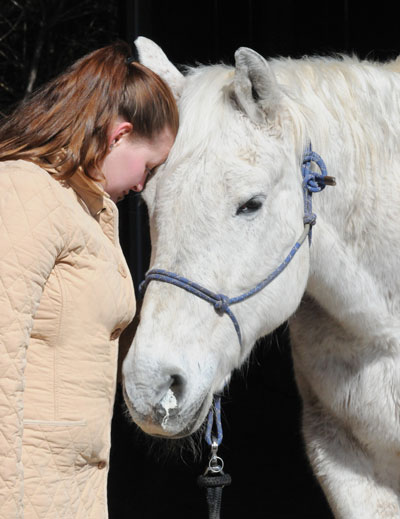
Without question, one of the more respiratory diseases of the horse is infection with a bacterium called Streptococcus equi, more commonly known as “strangles.”
What is Strangles?
Strangles is a messy disease caused by a contagious bacterium. It is one of the most commonly diagnosed contagious diseases of the horse, and it occurs throughout the world. It was first reported as early as 1251. To put that in perspective, that’s about the same time that the Mongols were rapidly expanding their empire.
Although most horses recover from strangles without a problem, the disease can make some horses extremely sick; it even kills a few (although the same can be said for every other infectious disease). The fact that infected horses look like they feel so bad—combined with the name—probably makes horse owners panic about strangles more than just about any other equine infectious disease.
Horses infected with strangles typically have a fever (temperature above 101.0 degrees Fahrenheit), go off their feed, and develop a snotty nose (just like many respiratory infections). What distinguishes strangles from other respiratory diseases is that affected horses quickly develop swollen, sore lymph nodes, especially in the space between the jaw bones. These lymph nodes eventually abscess, open up, and discharge a lot of pus (which, quite frankly, is disgusting). Most infected horses recover. In most cases, antibiotics are not required.
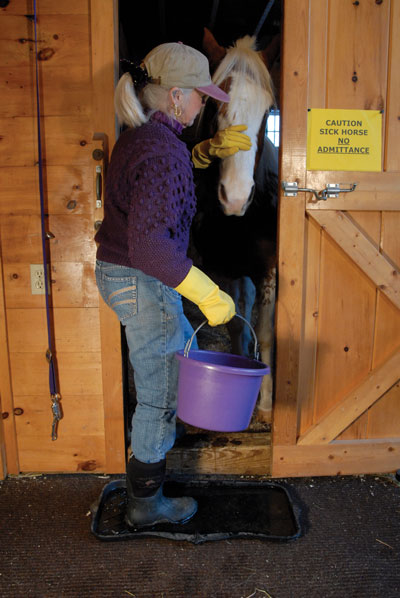
Complications
While most horses recover from strangles uneventfully, complications do occur in others. In particular, the infection can spread to other lymph nodes, including those inside the horse’s body.
Infection of internal lymph nodes is colorfully known as “bastard” strangles. When the internal abscesses rupture, it can pose a serious problem.
In order for recovery to occur, affected horses must be given antibiotics for several weeks. Additional complications include purpura hemorrhagica, a serious immune system reaction, muscle soreness (immune-medicated myositis), and a lack of milk production in infected, lactating mares.
Three Truisms About Strangles
There are three basic truisms about strangles:
◆ Nobody wants their horse to get strangles.
◆ Everyone gets worried when their horse gets strangles.
◆ Everyone gets worried that their horse is going to get strangles when someone else’s horse gets strangles.
Given the above, there are many opinions about what to do about strangles. Some interventions are effective, others probably don’t help, and others may hurt.
OPINION NO. 1: Vaccination is a good way to prevent strangles. (Doesn’t seem to be.)
Without question, vaccination is one of the most important things that has ever been done to help improve the health of most species on the planet. Many vaccinations have been tried for strangles. Unfortunately, none of them have been shown to work.
There are currently two types of strangles vaccines. One is given in the muscle; one is squirted up the horse’s nose. Both have reported complications (to be fair, so do most vaccines). However, there’s no consensus on the effectiveness of the available strangles vaccines. In fact, most countries in the world don’t vaccinate against strangles, and there’s no evidence that the disease rate is any different in those countries.
When deciding about whether to use a strangles vaccine on a horse, one has to weigh the perceived benefit of “doing something” against the possibility of causing harm. While there’s little evidence that the vaccines are of much benefit in preventing strangles, there’s some evidence that they can cause harm, not only in terms of reactions, but, in the case of the intranasal vaccine, conversion of the bacteria used to the disease itself. Follow the advice of your veterinarian.
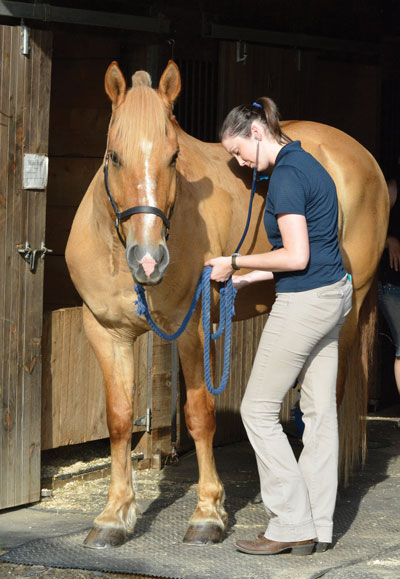
OPINION NO. 2: If your horse—or a group of horses—is near a horse with strangles, vaccinate them immediately. (Probably not necessary.)
When faced with a disease outbreak, it’s certainly tempting to vaccinate all horses who could conceivably be exposed to the disease. That may not be a good strategy, however. Because not only is there little evidence that the vaccines are effective, vaccinating—particularly in the face of disease—runs the risk of immune system reactions, especially an immune reaction called purpura hemorrhagica.
If a horse is exposed to the strangles bacteria, his immune system will start to react; that’s a big part of how your horse gets rid of the disease. However, overstimulating the immune system can have severe consequences. In fact, there is significantly increased risk of purpura reactions in horses that have been exposed to strangles and then vaccinated.
OPINION NO. 3: Horses develop natural immunity after they’ve been infected. (In a word, yes.)
Approximately 75 percent of horses who have recovered from a strangles infection will remain immune to another infection for five years or longer (the immunity is not lifelong).
OPINION NO. 4: The infection spreads through the air. (Nope.)
Strangles is spread by direct contact: contact with things such as snotty noses, contaminated halters, shared water troughs, dirty human hands, or mucous-covered shirt sleeves.
Nasal shedding usually begins two to three days after fever begins, and horses may be infectious for at least six weeks after their noses have dried up.
More troublesome are those uncommon horses with persistent guttural pouch infections. These carrier horses can shed the bacterium for years and be a source of outbreaks.
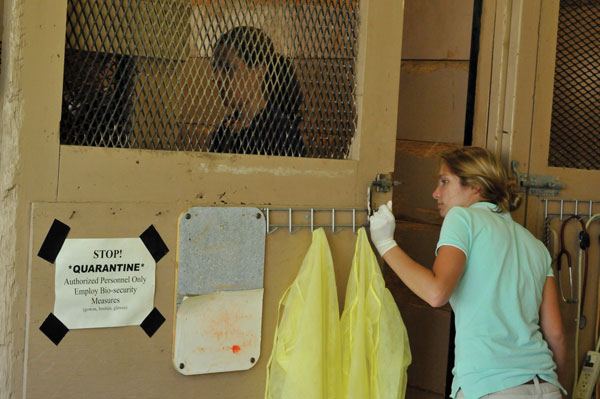
The infection isn’t easily spread by particles that get blown into the air (which is how viral diseases like influenza or herpesvirus spread). As such, stall walls, or isolation, serve as fairly effective barriers to the transmission of the disease.
Otherwise stated, if your horse is in one barn, and a horse that’s sick with strangles is in another barn, your horse will probably be OK. Just don’t walk your horse over to rub noses with the sick one. S. equi can remain viable in water for four to six weeks. However, contrary to “common knowledge,” it does not persist in manure or on the ground.
OPINION NO. 5: Antibiotics cause horses with strangles to get “bastard” strangles. (Again, nope.)
A stated concern has been that antibiotics are the worst thing possible for horses with strangles. In particular, there’s a myth that giving antibiotics to a horse with strangles will make the bacteria run and hide—that is, it will make the affected horse more likely to get internal abscesses (“bastard” strangles).
There’s simply no evidence that this is the case. It’s certainly true that antibiotics should be used judiciously when treating horses with strangles, but that’s the case in any situation where antibiotic treatment is being considered.
In fact, in selected cases, antibiotics are useful in strangles treatment. For example, it has been shown that penicillin given early—prior to the development of abscesses, when horses only have a fever—can prevent the full-blown disease. Of course, antibiotics should only be used after first consulting with your veterinarian.
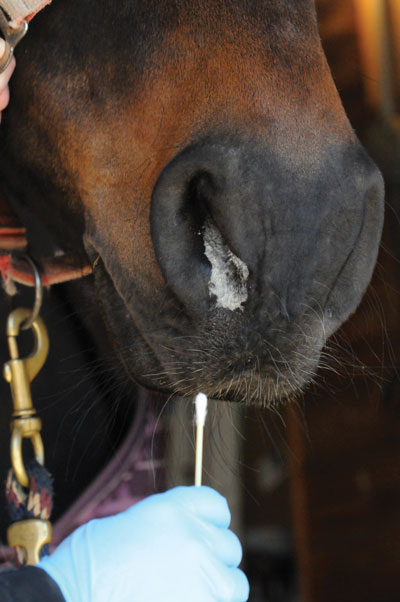
Prevention
While not as severe a disease as many people fear, strangles can be a real problem for herds of horses that aren’t carefully managed, as well as for individual horses that are severely affected.
If your horse has strangles or is at a facility where strangles has been diagnosed, a careful and comprehensive approach to getting rid of the problem, directed by your veterinarian, is important. Such an approach may include:
◆ Isolating and treating sick horses.
◆ Quarantining incoming horses before introducing them to a herd, checking them to see if they are carriers and treating them if they are.
◆ Using good hygiene measures, such as cleaning stalls and waterers, to prevent transmission. Although rare, infections in humans have been reported. When dealing with infected horses, handlers should avoid contact with infectious material, especially around the nose and mouth.
◆ Limiting exposure of healthy horses to sick horses.
◆ Recognizing horses with fevers early and giving them antibiotics before abscesses start to form.
Strangles can be a serious disease in an individual horse, but control of the spread of the disease requires careful, thoughtful management of the entire herd and premises. Prevention can’t be achieved merely by vaccinating horses and giving antibiotics indiscriminately. If you know the facts, you can more effectively tackle the disease head-on.
For More Information about Strangles in HorsesThe best single source of informa-tion about the disease is probably the consensus statement issued by the American College of Veterinary Internal Medicine, updated in 2018. You can access that statement at www.onlinelibrary.wiley.com/doi/full/10.1111/jvim.15043. |
This article about strangles in horses appeared in the April 2020 issue of Horse Illustrated magazine. Click here to subscribe!





